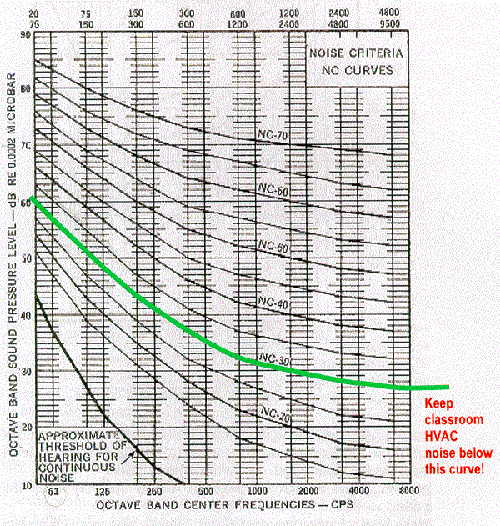Keep heating and airconditioning noise low
in classrooms
So many of our nation's classrooms are noisy that there has been concerted effort among educators, architects,
acoustical consultants and audiologists to add classroom acoustics to the requirements of ADA.
The problem with mechanical equipment noise in classrooms is that, in addition to the many kids with hearing impairments,
the character of teaching is changing
- with more student discussion. Thus the distances between the students, and the volume of their voices, varies
considerably, making it often impossible for students with good hearing to hear idea contributions from across the room. Add to that the inexperience of all K-8 people
to fill in missing parts of words, and the growing number of older kids for whom English is a second language...
and there IS a problem!
NOTE: This is not an easy task.
Keeping ventilation noise down to these levels requires attention to details. HVAC fans must be kept away from
classrooms. All piping and electrical conduits which feed the HVAC units must have vibration isolators. Large supply
ducts must be kept out of the classroom ceilings. Air velocity thru the ducts must be very slow. Dampers must be
placed at the right places in the ducts. Supply and return ducts must be lined with sound absorbing insulation
that will not support mold and bacteria.
And on and on.
At the earliest possible planning sessions,
seriously consider hiring an acoustic consulting firm who will provide graphs, like the one below, which show actual field measurements from their recent construction
projects.
It is VERY expensive to try to correct a noisy HVAC system after it has been
built into your classrooms.
For the technically interested, an "NC curve" which has worked well in day-to-day classroom applications
is shown below.
Then too, remember that desktop CPU fans make a lot of speech-masking noise, and so
do many video projector fans.

Have a classroom design question, or a good idea? E-mail:

